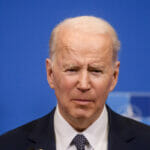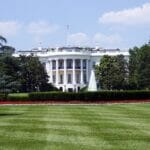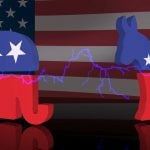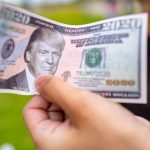Frederick J. Sheehan is the author of Panderer to Power: The Untold Story of How Alan Greenspan Enriched Wall Street and Left a Legacy of Recession (McGraw-Hill, 2009), which was translated and republished in Chinese (2014). He is researching a book about Ben Bernanke. He writes a blog at www.AuContrarian.com.
Former Federal Reserve Chairman Paul Volcker (Princeton ’49) returned to campus on May 30, 2014. He was treading in the devil’s den and has been treated accordingly. It is the homeport of Alan Blinder, Paul Krugman, Ben Bernanke and an arsenal of other pint-sized sophists.
The Daily Princetonian, the campus newspaper, put words in Volcker’s mouth that betray his trust and align him with the sorry characters whose contortions he despises. In a dialogue quoted by the Daily Princetonian. [All bold throughout is mine – FJS] the paper claims Volcker said: “The responsibility of any central bank is price stability. I was at the helm at that time. Price stability is two percent inflation, which we can’t closely control anyway. They ought to make sure that they are making policies that are convincing to the public and to the markets that they’re not going to tolerate inflation.
Price stability is zero percent and Paul Volcker has consistently made this clear.
Quoting from “Transparency has Landed“:
“At the spring 2006 Grant’s Interest Rate Observer Conference, Volcker told the audience the upstarts were a puzzle to him: ‘A great mantra of central bankers these days is ‘inflation targeting.‘ I don’t understand that nomenclature. I didn’t think central bankers were in the business of targeting inflation. I thought we were supposed to be targeting stability. We all say we are in favor of stability. You hear these speeches, Bernanke saying ‘We are in favor of stability. That is why we are targeting inflation.’ There is a certain semantic problem for me in that connection.
“Volcker went on to say he had returned from a central bankers’ synod in Frankfurt, Germany. On the topic of inflation targeting, he believes he was the only dissenter in the room: ‘The debate was me on one side and all of the central bankers on the other side.’ It was explained to Volcker ‘the importance of inflation targeting was to never go above that. There was an ironclad agreement to keep the inflation rate below that or below the target.’
“Volcker also told his audience: “I can remember my old professors at Harvard, in 1951 or so, saying a little inflation is a good thing. ‘We don’t want very much, but 2% is good.'”
Paul Volcker continues to punish “inflation targeting.” On April 19, 2009, the Wall Street Journal published: “Kohn, Volcker Go Toe-to-Toe on Inflation Target.” Donald Kohn was Vice Chairman of the Federal Reserve Board at the time.
From the Journal:
“Federal Reserve Vice Chairman Donald Kohn’s question-and-answer session at a Vanderbilt University conference Saturday was going as countless others surely have in his years as a top policy maker. Until Paul Volcker raised his hand. Then, Kohn was grilled over the Fed’s apparent effort to convey that it considers a roughly 2% inflation rate to be appropriate for the economy in the long term…
“I don’t get it,” Volcker said, leading to a lively back and forth between the two central-bank heavyweights.
“By setting 2% as an inflation objective, the Fed is ‘telling people in a generation they’re going to be losing half their purchasing power,’ Volcker said. And if 2% is the best inflation rate, and the economic recovery lags, does that mean that 3% becomes the ideal rate, he asked.
[Interrupting the Journal’s account – from Federal Reserve Chairman William McChesney Martin half a century earlier, speaking to the Senate: “[Two] percent in a year may not seem startling, in fact, during the past year average prices have increased by more than 2 percent – but this concept of creeping inflation implies that a price rise of this kind would be expected to continue indefinitely. According to those who espouse this view, rising prices would then be the normal expectation and the Federal Reserve accordingly would no longer strive to keep the value of money stable but would simply try to temper the rate of depreciation. Business and business decisions would be made in light of this prospect.” Our so-called economists can not argue against this point, so, they ignore it. This is simple mathematics.]“Kohn responded that by aiming at 2%, ‘you have a little more room in nominal interest rates … to react to an adverse shock to the economy.'”
Not able to argue against simple math, the so-called economists have conjured this entirely specious bogeyman, the wiggle room to fight “adverse shock,” that Federal Reserve Chairmen Martin and Volcker, who ran the shop through such horrors, knew was and is a fiction conjured by Inflationists.
At Princeton, Paul Volcker directed his attention to the so-called economic professors:
Daily Princetonian: “And does high inflation matter as long as it’s expected?”
Paul Volcker: “It sure does, if the market’s stable. And if it is expected, then everyone adjusts, and it doesn’t do you any good. The responsibility of the government is to have a stable currency. This kind of stuff that you’re being taught at Princeton disturbs me. Your teachers must be telling you that if you’ve got expected inflation, then everybody adjusts and then it’s OK. Is that what they’re telling you? Where did the question come from?”
Paul Volcker will now be cited in economic papers as stating: “Price stability is two percent inflation.”
To see how this works, we have the hot-off-the-press IMF Working Paper: “The Case for a Long-Run Inflation Target of Four Percent,” by Lawrence Ball, June 2014. Whoever Lawrence Ball might be, this paper is the instrument of Olivier Blanchard, Chief Economist of the IMF, who has sought a 4% “inflation target” to produce “stable …” for years.
Following is the sequence of Ball’s contrivance:
“Once inflation reached 4%, Volcker and his colleagues did not try to reduce it further.”
Later in the paper, Ball drew on that sentence to claim the following: “Why do today’s central bankers oppose 4% inflation when Paul Volcker did not?”
Then, by way of those two claims, Ball writes: “It was only around 1990 that central banks began to target inflation rates of 2% or less.” In other words, 4% was OK with Volcker in the 1980s; it was only in the next decade central bankers decided they should target a lower rate.
Then, of course, Ball (Blanchard) makes the contrafactual claim: “In the United States, a four percent inflation target would have dampened the Great Recession of 2008-9.”
This entire paper is anti-factual, from the very start.
In place of Ball’s (really Blanchard’s) sweeping claims, the following is from the FOMC transcript, at Paul Volcker’s final meeting as Fed chairman, on July 7, 1987. The staff forecast (at the beginning of the meeting) was of a 4.0% to 4.5% inflation rate, with worries the rate was trending higher.
Federal Reserve Governor Wayne Angell mentioned “one can have very modest inflation – less than 4 percent; that’s very plausible.”. Chairman Volcker grumbled: “Barely less than 4 percent.” Volcker went on to say, “the recent evidence is not very good in terms of what is happening in prices…And a lot of hard work will come unwound.”
Paul Volcker opposed any inflation from 1987 up to the moment. These wicked men in positions of authority are destroying the public’s trust. Paul Volcker manned the Fed in 1979 at such a moment and he restored public faith in American institutions. The so-called economists have destroyed the world economy beyond any possibility of such a restoration today.
Frederick Sheehan writes a blog at www.aucontrarian.com











